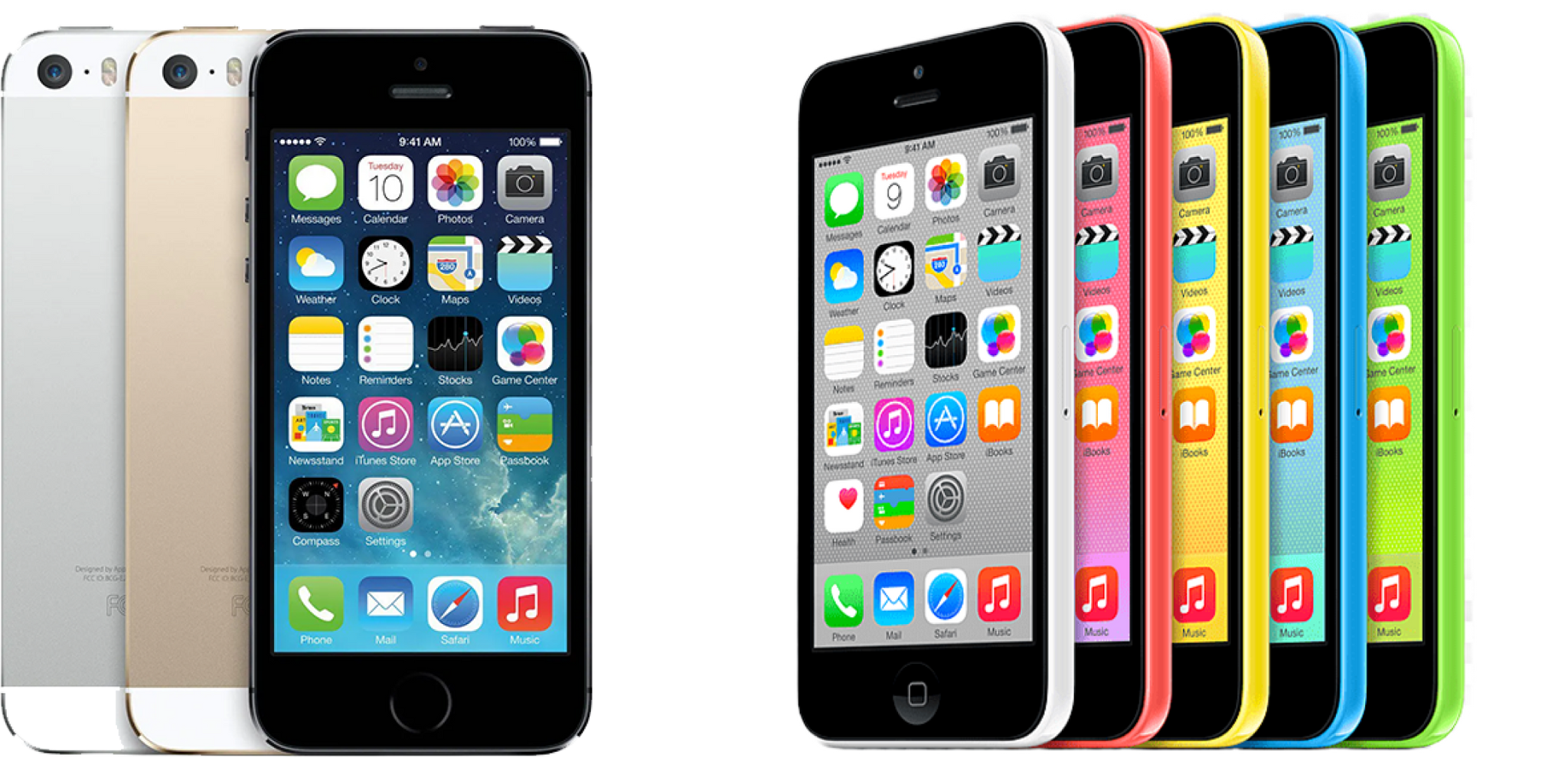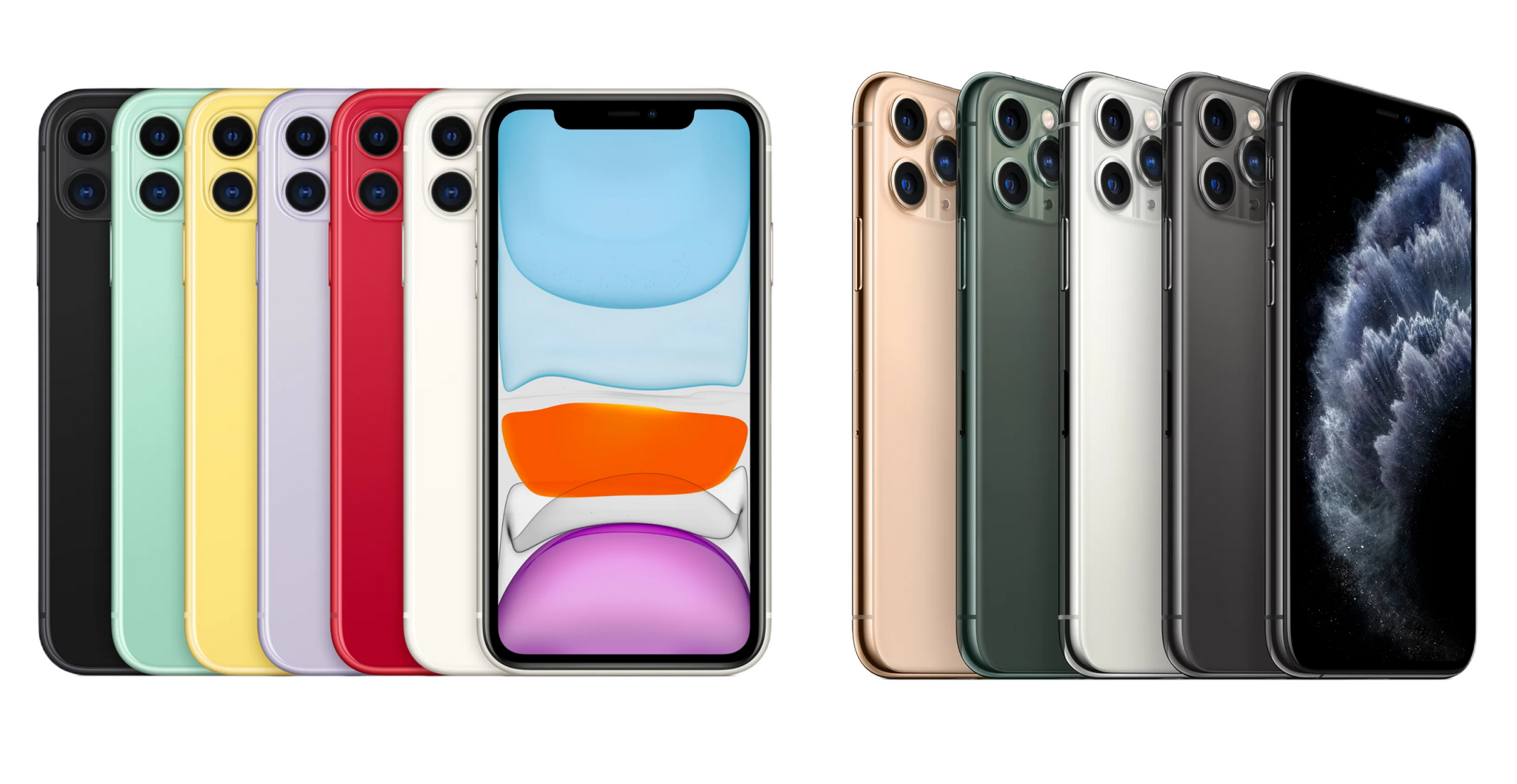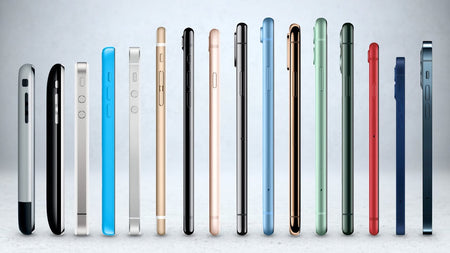Introduction
Apple's recent 'Far Out' event unveiled looks at the Apple Watch Series 8 and the new AirPods Pro 2, but the main source of buzz was generated by the new iPhone 14 Pro and iPhone 14 Pro Max.
Though the new models are offering up one of the biggest jumps in camera resolution for some time, listing the iPhone models in order shows exactly how Apple has kept fans of their revolutionary smartphones happy for 15 years with consistent improvements to their hardware.
iPhone
Release Date: 29 June, 2007
Apple's original iPhone was nothing short of a revelation. With the market condensed with Blackberry’s and other smartphones with connected keyboards, the relatively large-screen smartphone device was a novel design. Steve Jobs took the stage at the Macworld Conference at Moscone West in San Francisco to announce the iPhone, touting that it was a “widescreen iPod with touch controls,” a “revolutionary mobile phone,” and a “breakthrough Internet communicator. This took 2 and a half years to develop and was extremely popular following Apple’s iPod ranges.
The first Apple iPhone, had a 3.5" display screen, was 11.6mm thick, and had a staggering 16GB of storage! Compared to phone memory today that doesn't seem like much, but it was enormous at the time and the beginning of Apple's advancements in technology.

iPhone 3G and 3GS
Release Date: 11 July, 2008 and 19 June, 2009
The iPhone 3G wasn't much different than the original iPhone. But now there was an App Store! Initially apps could be free or paid starting with just 500 apps, but then in 2009, Apple added the ability to add in-app purchases which quickly became the dominant way to monetize apps, especially games. This was 4 years before the release of the Google PlayStore. It had 3G connectivity and a base storage of 8GB, small compared to its predecessor but encompassed GPS technology.
iPhone cameras were not as advanced as they are now but the iPhone 3GS introduced a 3-megapixel shooter that could also capture video.

iPhone 4 and 4S
Release Date: 24 June, 2010 and 14 October, 2011
The iPhone 4 was the first iPhone to have a front-facing camera which would catapult users in the craze of “selfies” today alongside the use of FaceTime hereafter. With 512 MB memory, it was equipped to handle a lot more than even the iPhone 3GS, which only had 256 MB of memory and retina displays.
"The most amazing iPhone, yet!" The iPhone 4S was released on October 14, 2011, with a better camera, more storage, and the introduction of digital personal assistant Siri. In the iPhone 4S, the "S" stands for Siri. The 4S was released at the Apple event in Cupertino, California with the slogan “Let’s Talk iPhone” signifying the introduction of Siri. The iPhone 4S took consumers by storm and was definitely one of the best cutting-edge iPhone releases.

iPhone 5, 5S & 5C
Release Date: 21 September, 2012 and 20 September, 2013
Lightning and LTE were the iPhone 5's biggest features in consumers purchasing this smartphone. The smaller port replaced Apple's 30-pin dock connector, and LTE brought the phone 4G speeds. The iPhone 5 also ran Apple’s new A6 processor which brought significant performance improvements to user interactions to load applications quicker and increased memory capacity.
Touch ID was born on the iPhone 5S, a system which unlocked your phone and pay for apps when you press the home button. Touch ID reads fingerprints in 360-degrees of orientation to create a mathematical representation of your fingerprint and compares this to your enrolled fingerprint data to identify a match and unlock the iPhone.

This was also the first gold iPhone, which spurred a gaggle of gold-coloured competitors. With the sleek design of the iPhone 5 and 5S came with more luxury to the iPhone’s with its price.
The 5C came with a variety of colours and a more affordable price for those looking to purchase the iPhone. It did not feature the revolutionary Touch ID but the 5C was extremely popular in not only the tech community, but for the everyday individual.
iPhone 6, 6 plus and 6S
Release Date: 19 September, 2014 and 19 September, 2015
The iPhone 6's internal specs were very similar to those of the iPhone 5s. The biggest difference was having a significantly larger screen and offering an even larger size called 6 Plus - which measured 4.7 and 5.5-inches at the diagonal, respectively.
The 6s changed everything too. Internally, Apple upgraded the iPhone 6s quite a lot. The camera made a huge leap forward going from 8 MP to 12 MP and the memory was also doubled from 1 GB to 2 GB. After the iPhone 6 had some bending issues (#bendgate), Apple manufactured the iPhone 6s series with aluminium for a more durable and rigid device.
To date, Apple’s iPhone 6 and iPhone 6 Plus remain one of the company’s best selling models of all time with selling over 10 million units in its first week compared to previous models which were 9 million or less.

iPhone 7, 7 Plus & SE
Release Date: 16 September, 2016 and 31 March, 2016
Apple finally dropped a 16GB base model option, with iPhone 7 and iPhone 7 Plus base models starting at 32GB of storage and going up to 256 GB. The iPhone 7 Plus proved to be more popular than previous Plus models due to its new dual camera, which made improved camera features like zoom, Portrait mode and Depth of Field possible. Perhaps the most controversial feature of the iPhone 7 and 7 Plus was the removal of the headphone jack as Apple introduced its wireless AirPods at the same event.
A few people were angry about the size of the iPhone 6 and iPhone 6 Plus so the iPhone SE was introduced as a more affordable option and to appease those that wanted a smaller, but equally potent iPhone.

iPhone 8, 8 Plus and X
Release Date: 22 September, 2017 and 3 November, 2017
The iPhone 8 and 8 Plus introduced us to Qi compatible wireless charging with the glass cover on the back of the iPhone. The camera was upgraded tools for editing and filtering our images and the true-tone display improved the viewing experience for users. By this time, wireless products were becoming the new normal.
Skipping right over the iPhone 9, the iPhone X release represented 10 years of iPhone. The iPhone X included an extra front-facing camera and it was the first iPhone to launch without a Home button. Instead, Apple utilised new facial-recognition technology for its Face ID to unlock users iPhone as their new security and privacy measure.

iPhone XS, Max & XR
Release Date: 21 September, 2018 and 26 October, 2018
These XS and XS Max were definite upgrades from the previous iPhone X model. Both models had the front-facing camera for Portrait-mode and came with a super Retina HD display. The biggest upgrade might be the smallest; the A12 bionic chip increased the processing power while decreasing battery drain so users could use their iPhone for longer with faster applications.
The iPhone XR was another version of this model which was smaller than the XS and XS Max but was bigger than the 7 and 8 plus. This resembled the iPhone 5C with its striking colours and also gave consumers a less expensive option than the X and XS models.

iPhone 11, Pro & Max
Release Date: 20 September, 2019
The iPhone 11 was the least expensive of Apple's annual line at the time, but still had enough new features to be in the running for 2019's most popular iPhone. The device features a 6.1-inch Liquid Retina display, and comes in six colours. The most exciting addition may have been the second camera on the back of the 11, both 12 MP, and offering wide and ultra-wide lenses.
The iPhone 11 Pro and iPhone Pro Max were the first iPhones to feature triple-lens cameras. Apple really focused down on the camera performance for the iPhone 11 range for its users.

iPhone 12, Pro, Mini & Max
Release Date: 23 October, 2020 and 13 November, 2020
Apple announced their next line up in iPhones from the 11 with the iPhone 12 and iPhone 12 mini. With edge-to-edge Super Retina XDR displays and a new Ceramic Shield cover, Apple stated this was "the biggest jump in durability ever on an iPhone." The iPhone 12 had some pretty significant changes including OLED display and 5G.
The iPhone 12 models were powered by an A14 Bionic chip, and with a dual-camera system capable of shooting HDR video on Dolby Vision.

iPhone 13, Mini, Pro & Max
Release Date: 24 September, 2021
The new iPhone's A15 processor was unveiled in the lineup included the iPhone 13, 13 mini, 13 Pro, and Pro Max variations. With the iPhone 13, Apple improved the battery life on ALL models, bringing performance back in line with what you got on the iPhone 11.
The new iPhone's A15 processor was unveiled in the lineup included the iPhone 13, 13 mini, 13 Pro, and Pro Max variations. With the iPhone 13, Apple improved the battery life on ALL models, bringing performance back in line with what you got on the iPhone 11.

iPhone 14, Plus, Pro & Max
Release Date: 14 - 16 September 2022
Instead of the iPhone mini, Apple brought the Plus back for iPhone 14, with the slightly larger display that had been restricted to the exclusive Pro and Pro Max models in recent years. The iPhone 14 models came with some impressive safety-focused features, including Crash Detection and Emergency SOS via satellite which were firsts in a smartphone.
In addition to the new A16 Bionic chip, the iPhone 14 Pro models came with a new "Dynamic Island" feature in the previous location of the notch for a seamless display of notifications and background activities.

Want to know more about Apple products, releases and general technology related info? Read our Apple Megamac blogs here!



